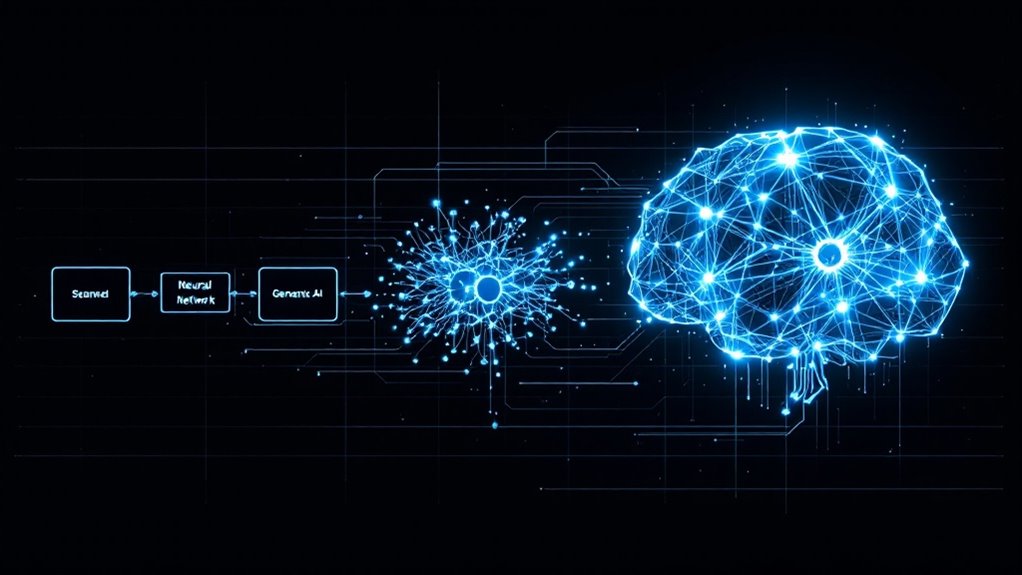AI in retail is no longer just a helpful sidekick—it’s the brains behind hyper-personalized shopping, nudging you with eerily on-point product picks (remember those running shoes you Googled once?). Retailers like Walmart use AI to automate fridge restocking, dodging stockouts and overflows with predictive analytics sharper than your grandma’s bargain-hunting instincts. Nearly 87% of retailers now use AI somewhere. Want to know how this technology keeps shopping smart and surprisingly slick? Stick around—the good stuff’s coming.
Shopping carts, meet your new AI overlords. The days of wandering the aisles hoping your favorite cereal isn’t out of stock—or worse, getting a “recommended just for you” email about garden hoses when you live in a shoebox—are coming to an end, thanks to artificial intelligence.
AI in retail isn’t just hype or another Silicon Valley fever dream. The market, now worth $9.36 billion, is projected to balloon to $85 billion by 2032. That’s nearly a tenfold increase, powered by a 31.8% CAGR. So yes, your shopping experience is about to get a lot smarter, whether you want it or not. 87% of retailers have deployed AI in at least one business area, reflecting how deeply integrated these technologies are becoming in the industry. In fact, North America held 39.08% market share in 2023, highlighting the region’s leadership and early adoption of AI in retail.
AI in retail is booming, soon making your shopping trip smarter—and a lot less predictable—whether you’re ready or not.
Let’s talk personalization first. AI algorithms, with all the subtlety of Sherlock Holmes, analyze customer behavior to deliver eerily accurate recommendations. You checked out running shoes last week? Guess what, you’re about to see them everywhere, along with matching socks and smart water bottles.
Chatbots and virtual assistants, working 24/7 with a caffeine tolerance that would kill most humans, are now handling customer questions, smoothing out the bumps in your journey—no matter if it’s midnight or midday.
But AI isn’t just about making you buy more. It’s also cleaning up the chaos behind the scenes. Inventory management, once a game of educated guesses and crossed fingers, now relies on predictive analytics and real-time IoT data.
Walmart, for example, is using generative AI to automate fridge restocking. Stockouts and overstock are becoming relics, as AI keeps the shelves filled with the stuff you actually want—no more apocalyptic toilet paper shortages, hopefully.
Retailers aren’t just sticking to the cloud; over half prefer a hybrid approach, blending on-premise muscle with cloud brains.
And with omnichannel AI, your in-store and online experiences are merging into one seamless, data-driven journey. This focus on efficiency and personalization is part of a broader trend where AI is expected to contribute up to economic growth of $15.7 trillion to the global economy by 2030. The result? Fewer awkward moments, better service, and—if the trend continues—a future where shopping feels less like a chore and more like a Netflix binge: hyper-personalized, on-demand, and just a bit unsettling in its accuracy.









